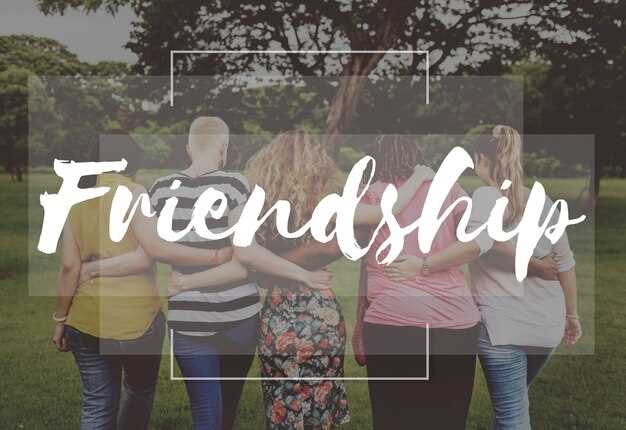Respond to invitations within 24 hours to show you’re interested and serious. A quick reply sets the tone, helps you meet people who value direct communicating, and reduces misread signals. For the first date, choose a short, public setting and cap the time at 60 minutes to keep energy high and expectations clear.
Have a short, honest premise ready. Use simple statements like, “I’m here to meet someone who shares core values,” and ask two open questions to learn about their care and priorities. An expert would say you’ll get better reads from real conversations than from profiles. If you’re curious, a quick google search on common dating red flags can sharpen your intuition and save you from wasting time.
theres a clear benefit to limiting back-and-forth chats before meeting. Sometimes messages drift into overthinking or pressure to reveal personal details. Meet in person soon to test chemistry, then decide whether to continue; if the vibe isn’t right, leave politely and move on. nice closure helps you keep momentum and stay focused on what truly matters.
Communicating with care yields the best results. Be explicit about your reason for dating and your boundaries in early chats. If the other person responds with respect, you gain a super benefit: clearer signals about compatibility. Keep the tone warm, and use your own language rather than copying scripts; that authenticity attracts people who want to build something real with you.
Later on, build a simple framework with your team of trusted friends: note what patterns you liked, what felt off, and which dates you’d repeat. Use those notes to guide future invites, and keep meeting people who match your pace and values. You’ll attract partners who respect your boundaries and your time, and you’ll feel more confident in your choices as you go.
Dating Advice for Women Looking for Love
Start with a five-item values list and keep it handy; test every date without compromise to attract someone who aligns with your long-term goals and what you want.
- Invest in self-knowledge by writing down five core values and the experiences that shaped them; this helps realize what you want and what you won’t accept. Keep the list visible for quick reference before every date, and refresh it after key experiences; keep your standards above shallow attraction.
- Use topic-based questions to gauge alignment. Cover work, finances, time management, and how they treat others; this area shows how a date thinks and acts in real conversations, helping you avoid mismatches.
- Set hard boundaries from the start and observe responses. If someone pushes back, those pulls indicate you should reconsider; protecting your boundaries keeps you safe and happier with the right person, and it also shows how they treat others.
- Schedule dates that foster genuine connection rather than endless chatting. Plan 2-3 short meetings per week with different people to build a realistic view of your options and avoid rushing toward one choice.
- Maintain a simple log after each date: note what you learned about their values, experiences, and behavior; assess whether you can maintain long-term with them and how you feel about a potential with others.
This article focuses on practical steps you can apply today, without vague promises, to keep your dating life focused on what matters most: happiness, mutual respect, and a nice balance of listening and sharing. If you want a healthy start, aim for least two thoughtful conversations per week and look for evidence that aligns with your views and values. weve learned from others’ experiences that a clear approach leads to stronger connections.
Polish Your Online Profile: Clear photos and a concise, honest bio
Start with three clear photos: a bright headshot, a full-body image, and a candid shot that shows you in daily life. Pair these with a concise, honest bio of 2–3 sentences that states your intentions, what you enjoy, and the reasons you’re online. This setup creates early impressions that help others assess alignment without clicking through long walls of text.
Early signals come from authenticity. Use natural lighting, avoid heavy filters, and ensure your photos accurately reflect how you look now. A mismatched image sends a red flag and wastes time; already clear visuals save both you and others from false expectations.
Avoid pick-me language in your bio and messages. Instead, be direct about boundaries and what matters to you. This maturity helps you attract people who share your views and priorities and reduces the chance of toxic exchanges.
What to include in your bio:
- Two to three lines that describe who you are, what you enjoy, and what you’re seeking on this topic.
- One or two concrete stories that illustrate your values without oversharing.
- A brief note about pace, boundaries, and how you prefer to text (for example, preferred response times and topics).
Photo guidelines:
- Use natural light and avoid filters that distort your appearance.
- Show a hobby or moment of daily life to signal personality.
- Include at least one full-body shot and ensure all photos are current.
- Keep captions minimal but informative so readers understand context.
Texts should be concise but meaningful. Ask open questions about topics you care about to gauge compatibility, see how they respond to your boundaries, and decide if you want to continue chatting. Likely matches will reference your views or stories, and you’ll notice a shared pace that feels comfortable for both sides.
Benefit: a polished profile saves you time, increases chances of finding someone who respects your limits, and reduces back-and-forth that goes nowhere. For a woman, this approach strengthens confidence and makes dating more enjoyable and productive.
Remember: consistency matters. Update photos if your look changes, refresh the bio after a few conversations to reflect what you’ve learned about what you want, and you can revisit and adjust later.
Expand Your Social Circles: Attend groups and events that match your interests
Join one interest-based group this week and attend an event that matches your interests. Look for recurring meetups, classes, or volunteer shifts tied to hobbies you actually enjoy, such as photography, hiking, or painting. If a plan cancels, don’t overthink it and keep going right away.
Created with intention, your personal list should capture both activities you love and new skills you want to explore. Write down five to seven interests, then search for groups that meet regularly around those topics. Check the источник of local events here, and use it along with libraries and community boards to guide your choices.
To expand your circle, go to events that align with your interests: book clubs, photo walks, language exchanges, cooking classes, or volunteer teams. Right after you pick a group, go to the next event and introduce yourself with a simple, respectful line. When someone responds, keep your responses warm and curious, which helps you connect without pressure.
If you catch yourself thinking about outcomes, shift to the moment and think about having a good conversation instead of chasing a date. Let the scent of new energy guide you, stay healthy by setting boundaries, and remain pełen szacunku of others’ time and space. If you feel stuck, a friend or coach would come along to practice introductions, and you can role-play a few lines to feel more prepared. If an event hasnt posted dates yet, move into another option instead of waiting.
Start Natural Conversations: Use specific openers based on their profile
Open with a detail from their profile and craft a question around it. For example: “Loved your hiking pic–what trail would you recommend?”
Lead with a travel detail. If travel appears in their bio, try: “You visit cool spots–what place surprised you most on your last trip?”
Comment on a pet photo. For pet photos, lead with a light note: “That pup seems full of energy–what’s its name?”
Książki, sztuka lub muzyka. W przypadku książek, sztuki lub muzyki, konkretne pytanie: „Ich lista lektur wygląda na zróżnicowaną – która strona lub scena utkwiła ci ostatnio w pamięci?”
Utrzymuj zwięzłe odpowiedzi. Kiedy odpowiadasz, pisz krótko i zadawaj jedno jasne pytanie dodatkowe. Jeśli odpowiedzą, dodaj krótką notkę o swoim zainteresowaniu i zadaj kolejne pytanie.
Unikaj nieaktualnych linii. Wskazówki, jak unikać przestarzałych kwestii: preferuj konkretne, a nie ogólne, unikaj nacisków i uważaj na niedopasowanie tonu.
Ustal granice wcześnie: Określ, czego chcesz i jasno to zakomunikuj
Określ swoje granice podczas pierwszej rozmowy: jasno opisz, czego oczekujesz od randkowania, jakiego zachowania nie będziesz tolerować i w jakim tempie czujesz się komfortowo. Dla dziewczyny, która ceni wzajemny szacunek, takie podejście oszczędza czas i zmniejsza niepokój na rynku randkowym. Jeśli wolisz, żeby było prościej, ustal regułę potwierdzania planów na 24 godziny przed spotkaniem.
Skup się na trzech elementach: wartościach, oczekiwaniach i konsekwencjach. Bądź stanowczy, konkretny i konsekwentny; dzięki temu twoje stanowisko będzie jednoznaczne i zapobiegniesz powrotowi do przeszłych wzorców, przez które przeszedłeś. Komunikując się wcześnie, dajesz sobie przestrzeń na ocenę reakcji i zachowujesz komfort w każdej sytuacji.
| Stage | Granice do Ustalenia | Jak się komunikować | Konkretne zwroty |
|---|---|---|---|
| Early dating | Nienegocjowalne: uczciwość, szacunek, zobowiązania czasowe | Używaj komunikatów typu "ja"; bądź konkretny; ustal zasadę 24-godzinnego wyprzedzenia w przypadku zmian w planach | Cenię uczciwość i punktualność. Jeśli plany się zmieniają, potrzebuję przynajmniej 24-godzinnego wyprzedzenia." "Szukam stabilnego tempa i otwartej komunikacji. |
| Podczas rozmów | Omów tempo, ekskluzywność, granice mediów społecznościowych, przestrzeń osobistą | Zadawaj bezpośrednie pytania; odzwierciedl to, co słyszysz | Jakie tempo wydaje ci się odpowiednie? Jakie są twoje warunki nie do negocjacji? |
| Utrzymywanie granic | Konsekwencja; szybkie reagowanie na naruszenia; ponowne rozważenie wartości | Jasno określ konsekwencje; w razie potrzeby zaproponuj przerwę | “Jeśli ta granica nie będzie respektowana, zrobię krok wstecz w randkowaniu z tobą.” „Chcę kontynuować, ale tylko jeśli będziemy zgodni w tych kwestiach.” |
Badania wskazują, że wczesne ustalanie granic poprawia zaufanie i zmniejsza niepokój u wszystkich, a także pomaga z jasnością reagować na różne sytuacje. Poprzez okazywanie wartości i aktywne dbanie o granice sygnalizujesz, że oczekujesz pełnego szacunku traktowania i że możesz iść dalej, jeśli te standardy nie zostaną spełnione. Takie podejście sprawia, że czujesz się niezwykle pewnie i masz wszystko pod kontrolą, jednocześnie przyciągając partnerów, którzy podzielają Twoje cele i zwracają uwagę na Twoje potrzeby. W dużym stopniu chroni Cię i zapewnia wystarczającą ilość energii na wartościowe relacje.
Zaplanuj regularny czas na randki: Zablokuj czas w swoim tygodniu i trzymaj się go
Zarezerwuj jeden blok czasowy w tygodniu na randki i traktuj go jak spotkanie, które nie podlega negocjacjom. Wybierz stały dzień i godzinę i zobowiąż się do nich. Jeśli jakiś plan zostanie odwołany, szybko przejdź do zapasowego terminu w ciągu 24 godzin, aby utrzymać tempo.
Zaznacz ten czas w kalendarzu, ustaw przypomnienia i chroń go przed innymi zobowiązaniami. Wykorzystaj okno czasowe trwające od 60 do 90 minut z 15-minutowym buforem, abyś mógł płynnie przejść, niezależnie od tego, czy spotykasz się z kimś osobiście, czy umawiasz się na wirtualną rozmowę.
Opowiedz o tym planie bliskim przyjaciołom; ich wsparcie może być pomocne i uchroni cię przed powrotem do zwykłego przeglądania. Jeśli randka pójdzie dobrze, zyskasz miłe uczucie i jaśniejsze poczucie tego, czego chcesz. Twoje poglądy mają znaczenie; bądź dla siebie miły i pozostań romantycznie otwarty na nowych ludzi, chociaż strzeż swoich granic.
Kiedy tygodnie stają się pracowite, zarezerwuj szybką wizytę kontrolną lub mini-randkę, aby utrzymać nawyk. Proces kontynuuje się małymi zwycięstwami: dobra rozmowa, miła randka lub moment nauki, który wpływa na przyszłe dopasowania. Jeśli musisz odwołać, zaproponuj konkretny nowy termin w ciągu 48 godzin i dodaj szczyptę urozmaicenia – kawę, wideorozmowy i swobodny spacer – aby utrzymać rytm.
Śledź wyniki za pomocą prostego dziennika: data, ustawienie, nastrój i krótka notatka na temat kompatybilności. Niektórym osobom pomocne jest odniesienie się do zdjęcia w stylu Getty lub obrazka nastroju, aby zakotwiczyć wspomnienie chwili; jest to opcjonalne i lekkie, a nie obciążenie. Ten dziennik pomaga dostrzec wzorce i uniknąć powtarzania ustawień, które nie wydają się właściwe.
Poradnik zaleca prowadzenie krótkiej listy filtrów dla dopasowań i planu opieki dla rozmów. Inwestuj energię w udoskonalanie tego, czego szukasz i co oferujesz. Takie podejście zapewnia stałą ekspozycję na potencjalnych partnerów i poprawia jakość randkowania z biegiem czasu, nawet w okresach wzmożonej aktywności. Jeśli połączenie nie zaskoczy, weź oddech, idź dalej i spróbuj ponownie w przyszłym tygodniu.
Traktując randki jako regularną praktykę, tworzysz przestrzeń dla znaczących połączeń, budujesz pewność siebie i kończysz każdy tydzień z poczuciem proaktywności, a nie reaktywności. Takie podejście kumuluje się w czasie, gdy praktykujesz cotygodniowe randkowanie.

 Najlepsze porady randkowe dla kobiet szukających miłości">
Najlepsze porady randkowe dla kobiet szukających miłości">

 Najlepsze przykłady profili randkowych POF dla mężczyzn – Co działa, a co nie (Część 2)">
Najlepsze przykłady profili randkowych POF dla mężczyzn – Co działa, a co nie (Część 2)">
 11 prostych wskazówek na pierwszą randkę, które pomogą Ci zdobyć drugą randkę">
11 prostych wskazówek na pierwszą randkę, które pomogą Ci zdobyć drugą randkę">
 200 Cytatów o Strefie Przyjaciół, Które Idealnie Oddają Każdy Krępujący Moment">
200 Cytatów o Strefie Przyjaciół, Które Idealnie Oddają Każdy Krępujący Moment">